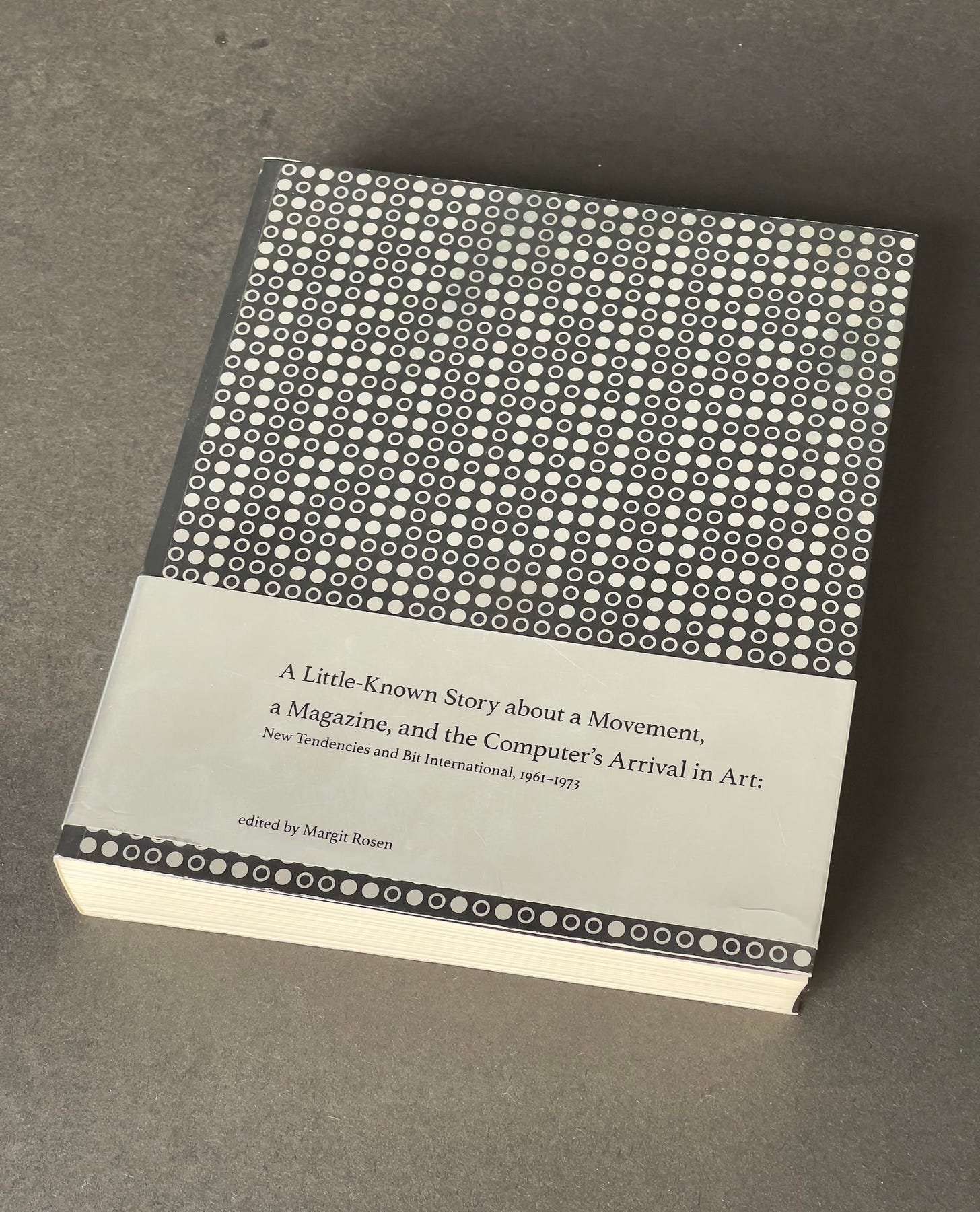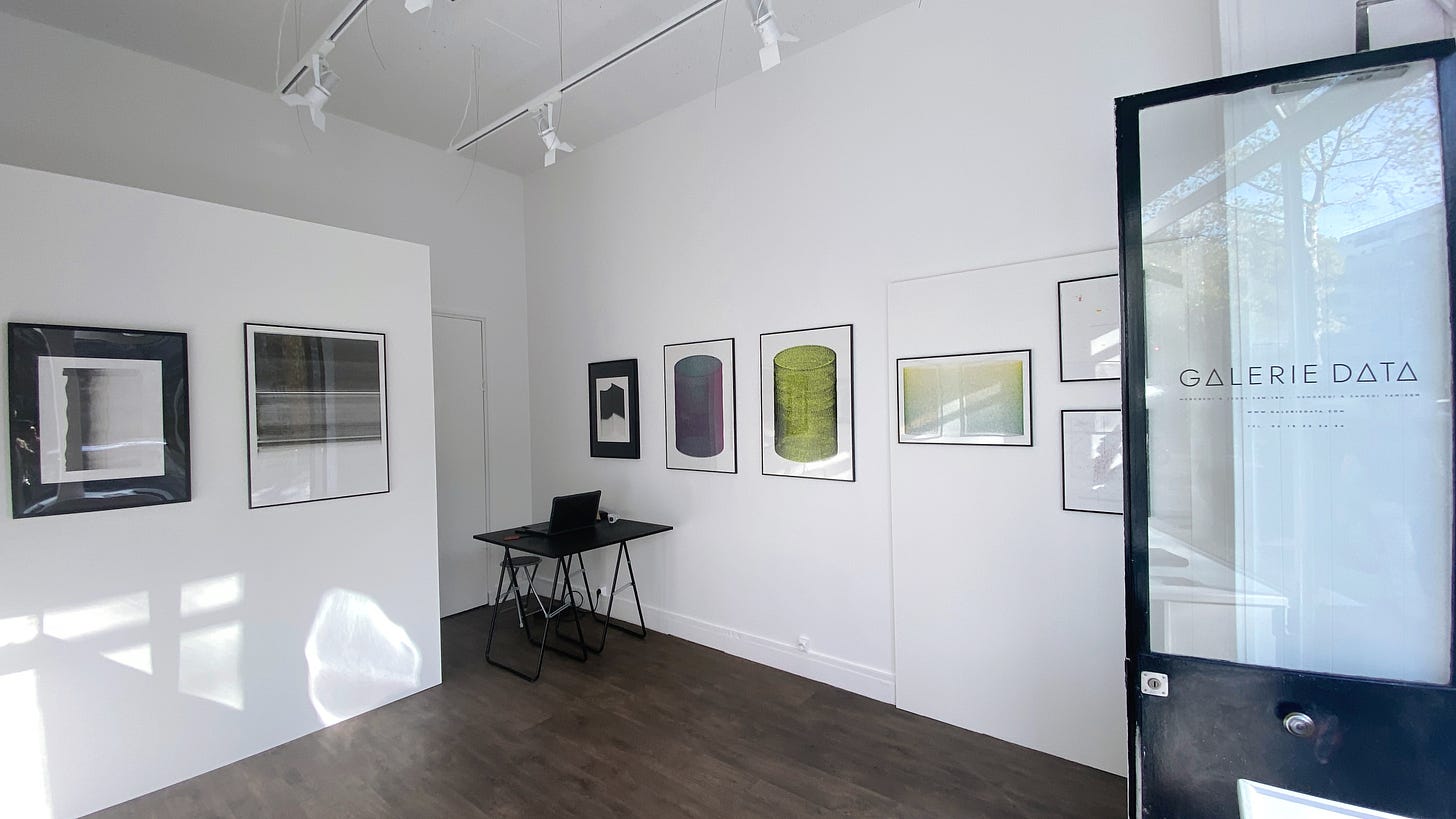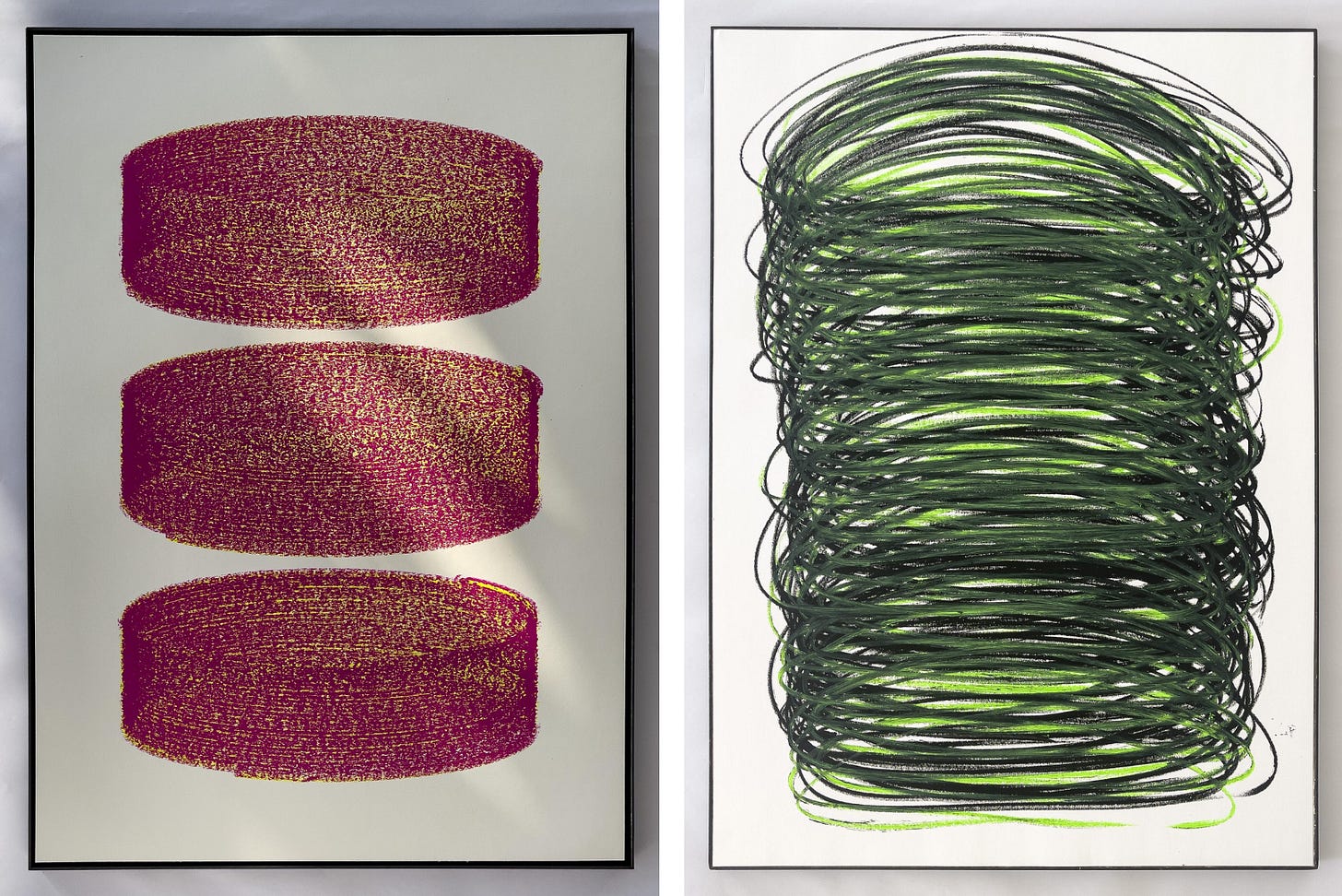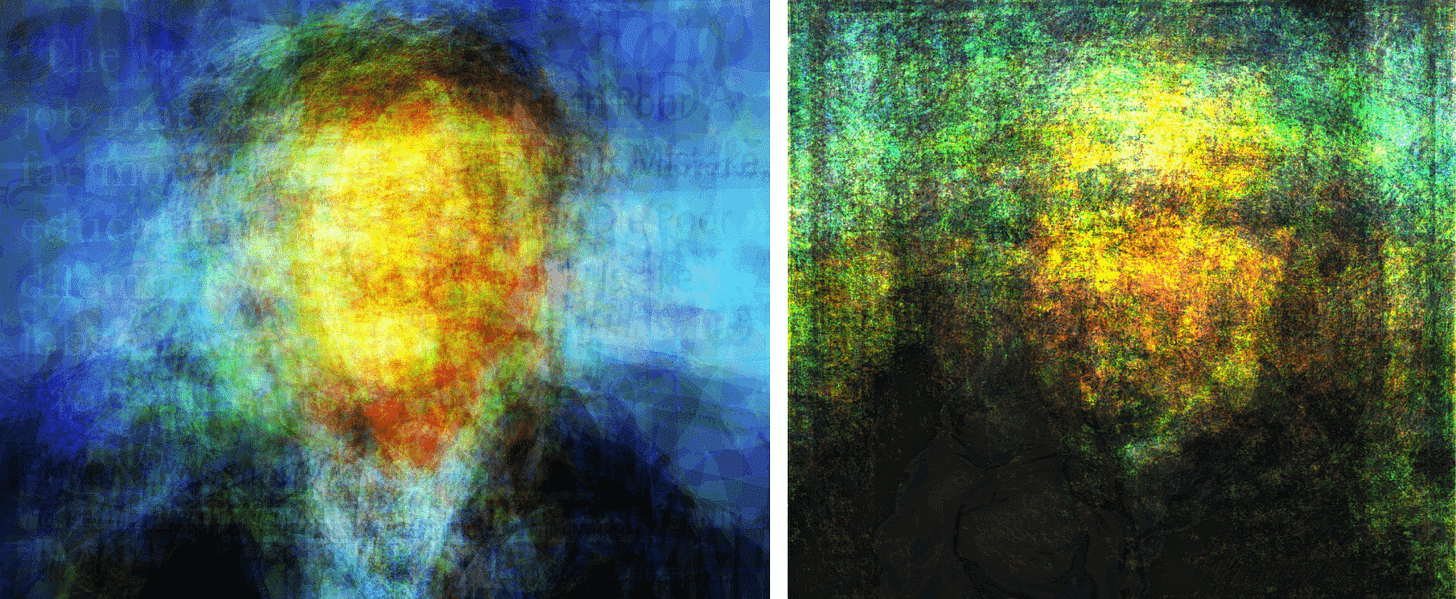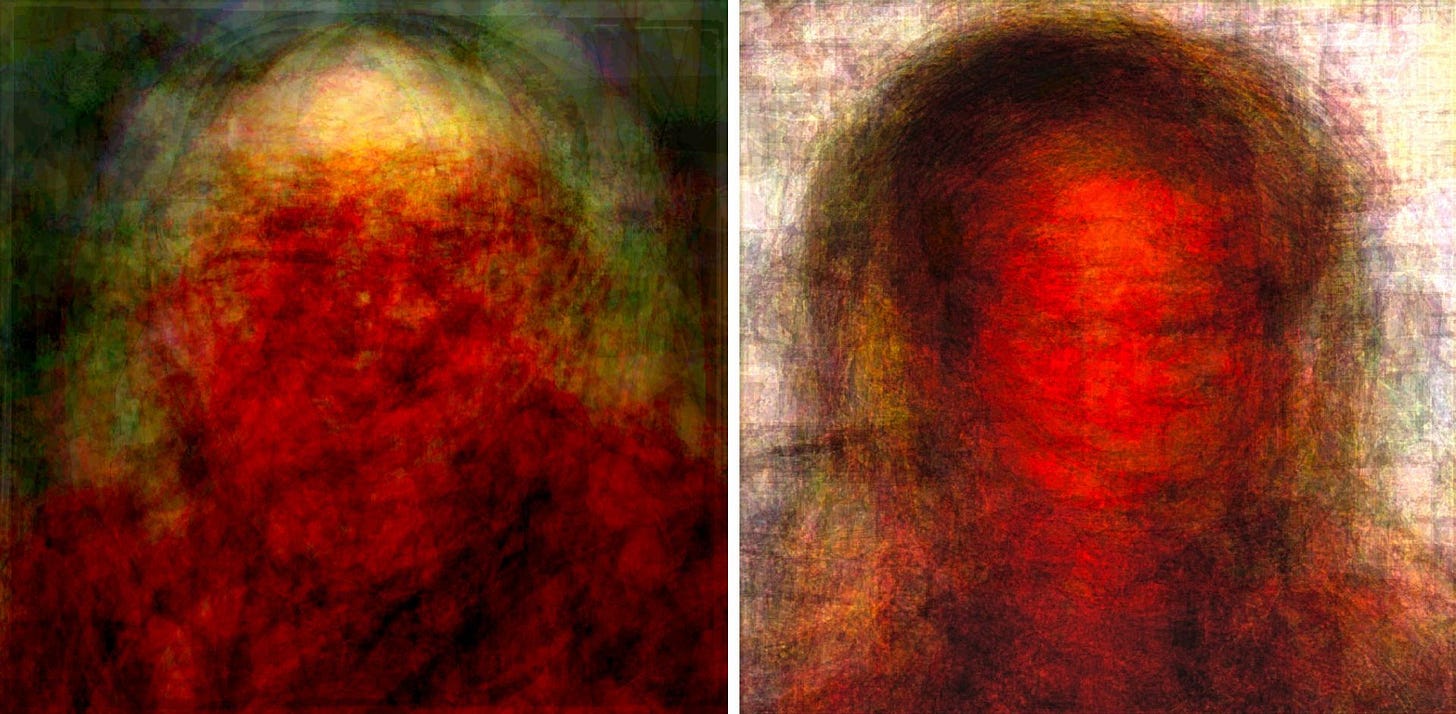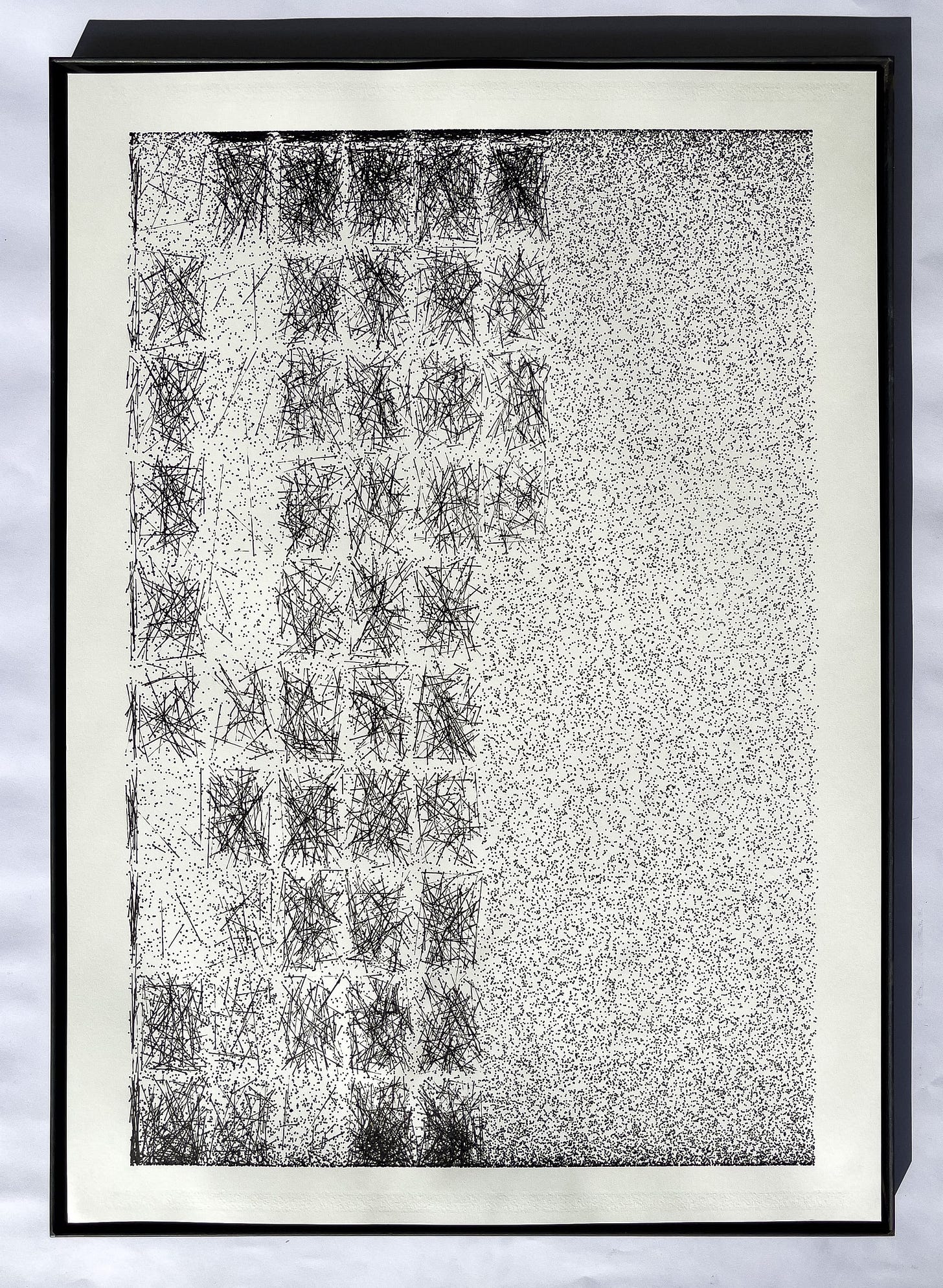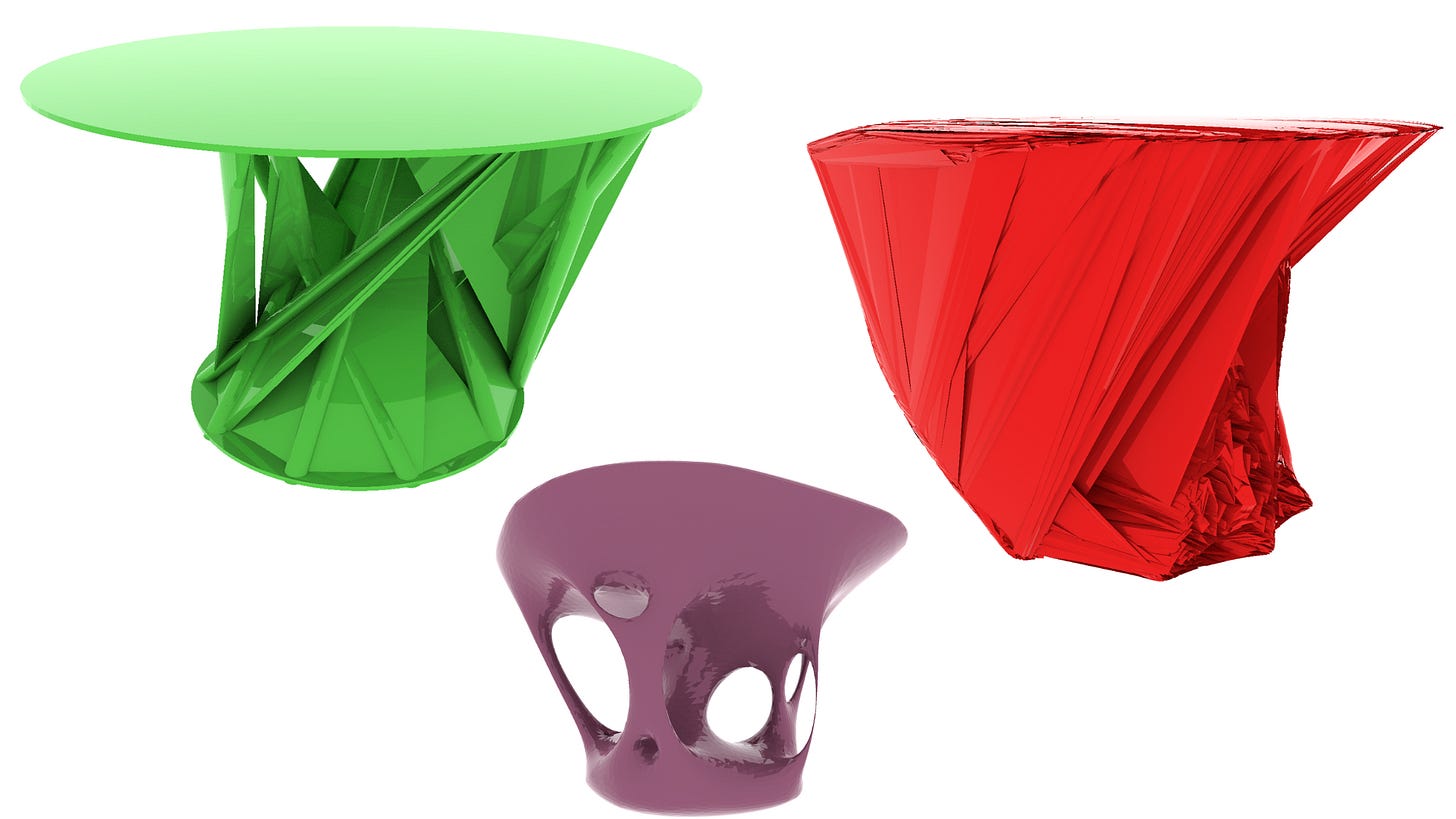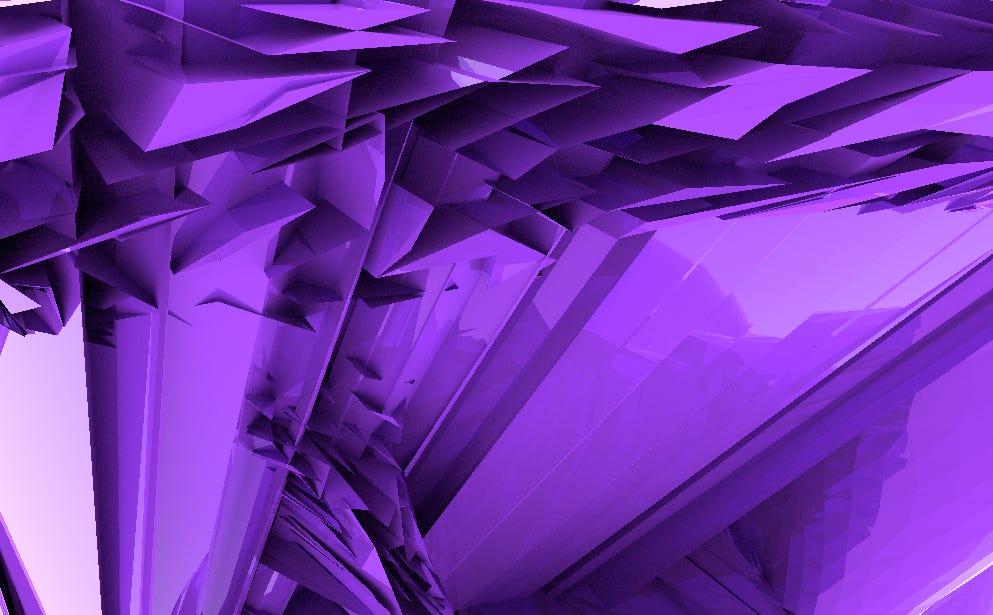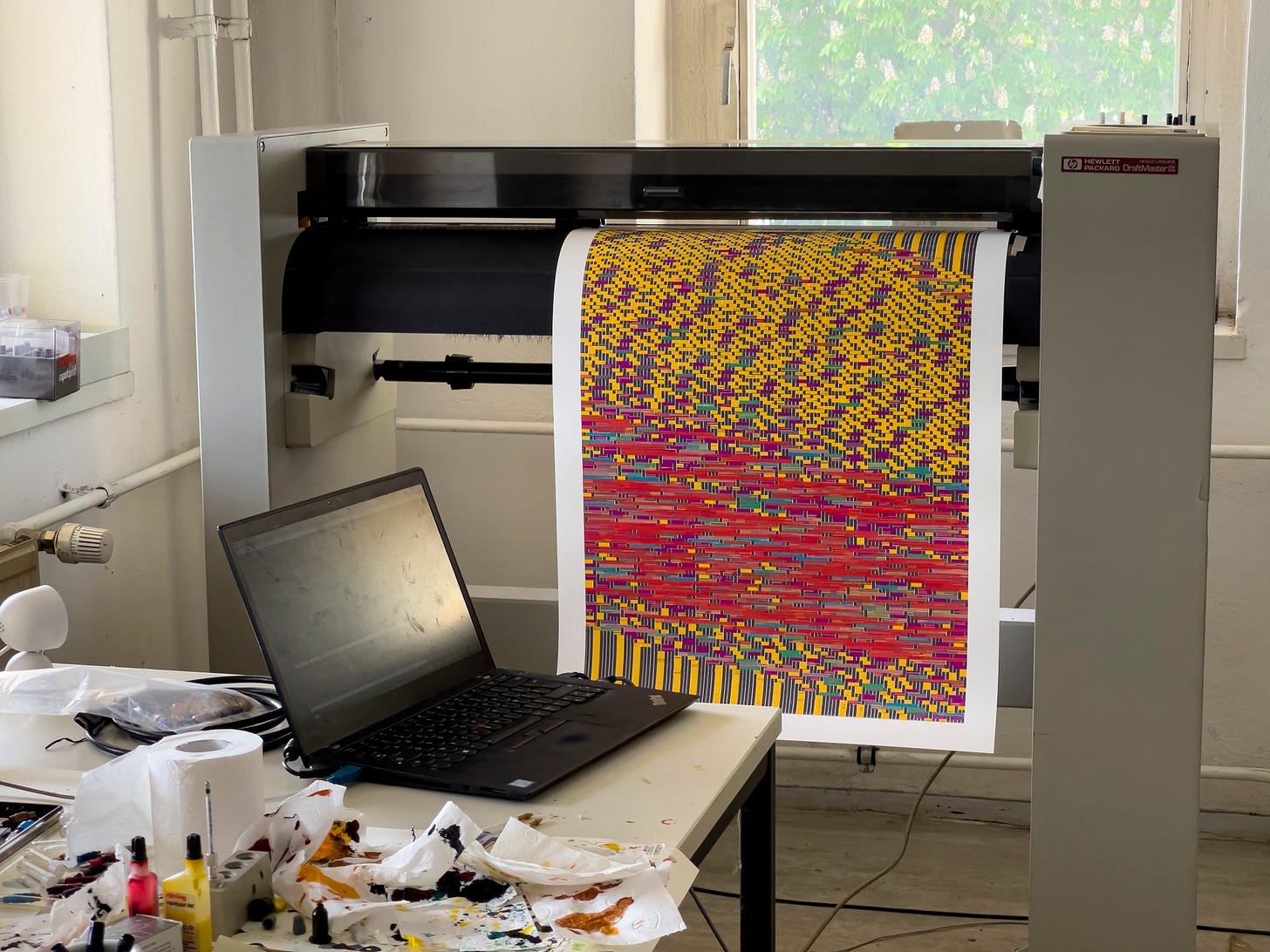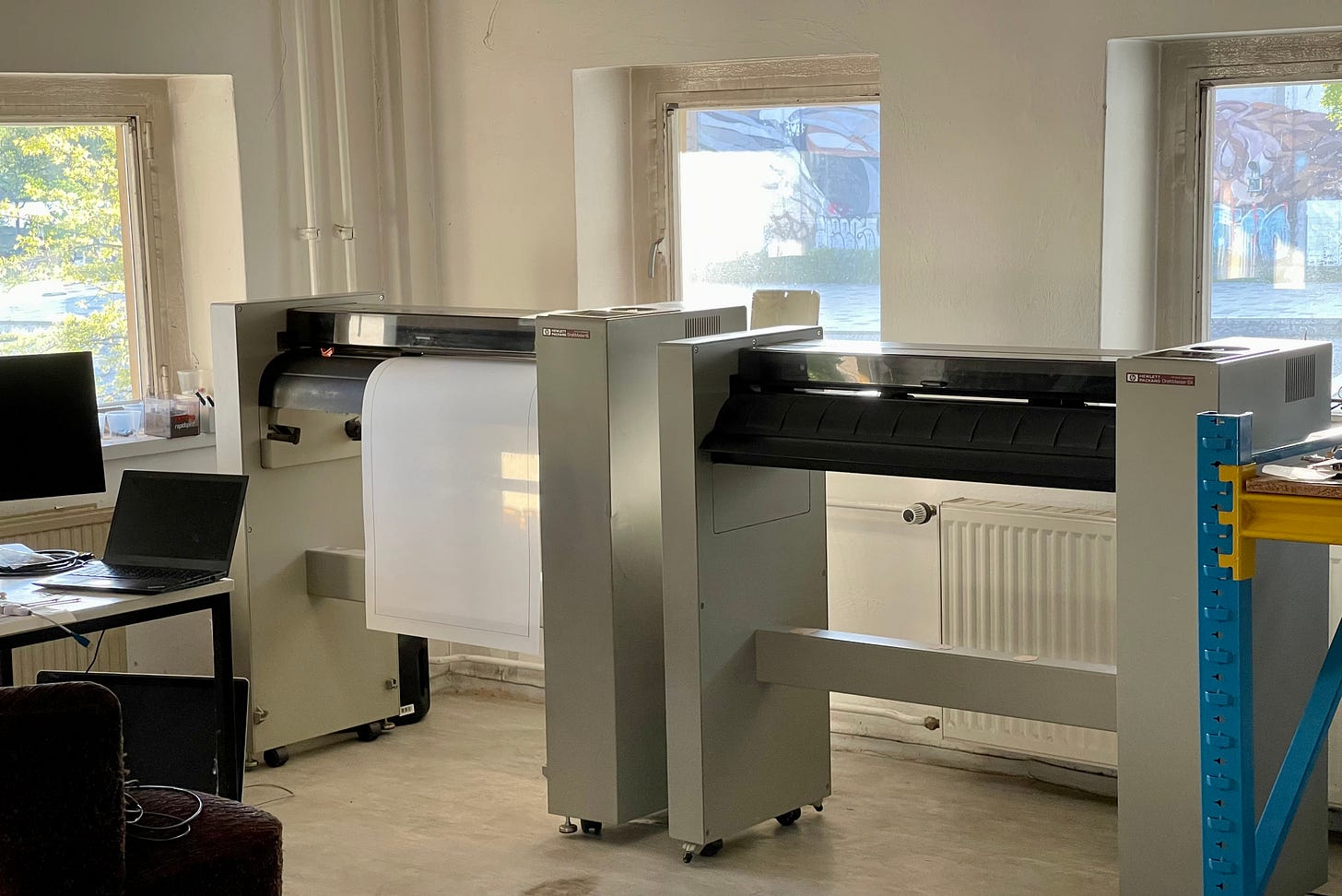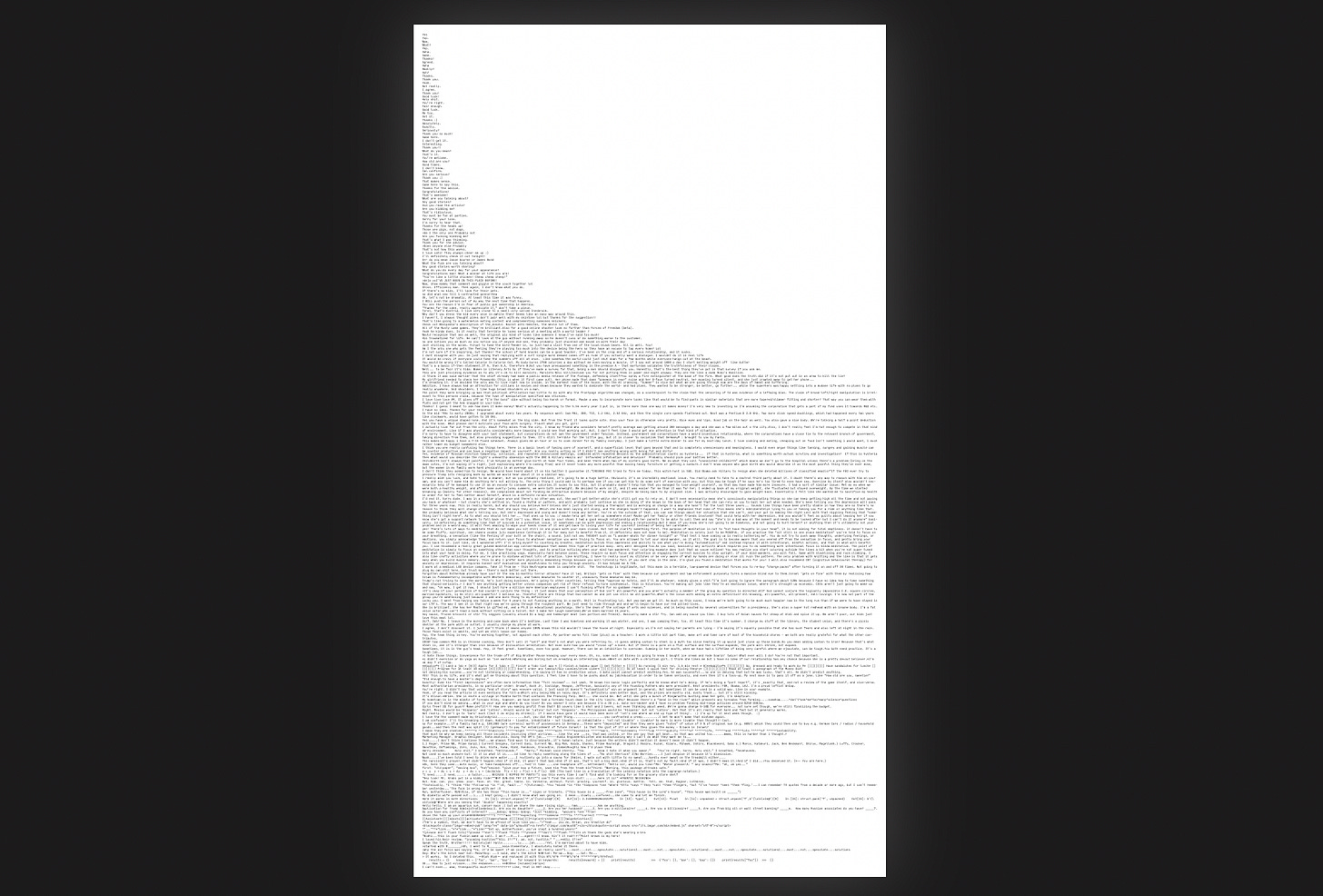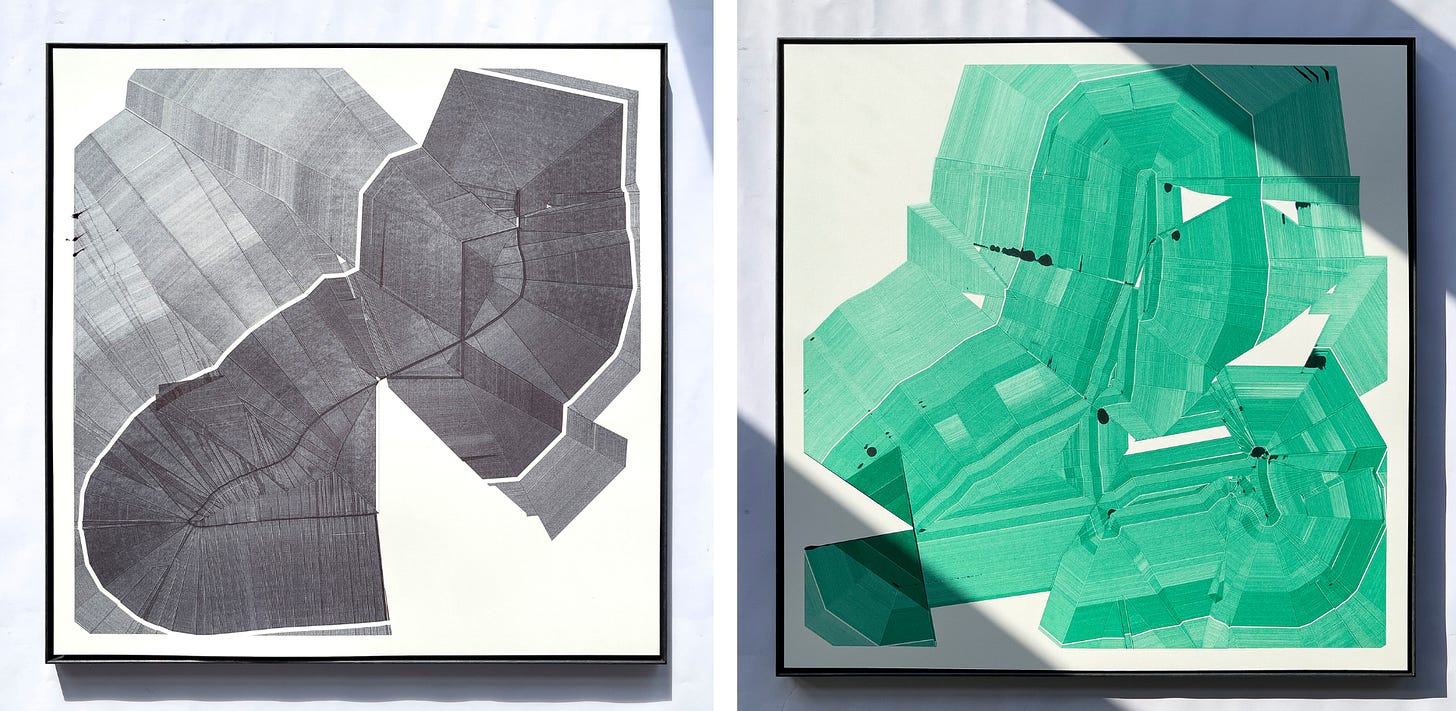An Interview with Marcel Schwittlick
↜ artist working with computers 💻, algorithms ҈ and drawing machines ၍. mostly installations, sculptures and works on paper ↝
From building his own plotter machines, to creating physical installations using old computers and tech, to writing a monologue for an algorithmic play, Marcel Schwittlick is one of the most diverse and creative thinking artists I’ve discovered in my short time here on earth.
Not only is Marcel a Graduate of the University of Applied Sciences in Berlin, but he has extensive studies in the technical properties of digital media, the development of media systems, and human-computer interaction. In addition, he has studied computer science as well as generative art, at The Art School of Berlin.
Marcel and I discuss some of his past projects like the renowned Upward Spiral series, some of the ways he works and creates, and how we probably won’t see an fxhash release from him anytime soon.
When we spoke, you mentioned ‘A Little-Known Story About a Movement, a Magazine, and the Computer's Arrival in Art’ edited by Margit Rosen, and how important it is to you.
Are there any other books you refer to or study when looking for inspiration?
I think it started when I was like 16, when I had one really strict German teacher.
He kind of made me like reading. And after that I started reading all kinds of classics.
I have collected many books in the past as well, from various pioneers like Franke, Frieder Nake, Manfred Mohr, Vera Molnar, Harold Cohen, Goodman, Max Bense, Heinz von Foerster, and many other computer art books, e.g., '95 Ars electronica catalogs. These and more are a huge influence.
Books from Marcels library:
How else do you find inspiration when creating?
I am usually not actively looking for inspiration, so the push comes to me from the environment I put myself in. I am going to the studio, iterating, progressing, and freestyling, acting spontaneously, and working close to the DNA of the material at hand.
Do you work on multiple projects at one time or do you mainly focus on one thing at a time and give it all of your attention until it's complete?
I work on ALL projects at the same time. I have the feeling I am not the person to focus on one thing and develop that until it's perfect. Not at all. I feel like I am working on about 50 projects simultaneously.
And I firmly believe that your work needs passive time to develop so you can see it with different eyes. The best case is that there is no public feedback on your work in progress because dopamine is a bad advisor.
In 2019 you had your first solo show in Berlin called Feeling Data - Have you changed as an artist from that time? What do you like most about presenting your physical work?
I believe I have changed a lot, even though plotters were already involved in the show, besides some sculptures and installations. I have improved my craft of working with mechanical drawing. And I have found even more love for this process.
An interesting observation is that I only started using color in my plotter work right after that exhibition.
What other ways would you like to present your work, in the future?
I have no idea; I have been working with all kinds of media and usually try my best to use a suitable medium for the piece at hand. I am looking forward to working performative as well as with E-ink.
I feel like I think differently about this aspect. I am not looking for other ways to present my work. Some ideas take shape in a specific medium.
I am doing my best to utilize fitting media for a particular idea to manifest it in reality. To remind me and potentially others about these thoughts.
Whether it's a kinetic installation, an interactive piece, text or digital images, or drawings and paintings- I am simply trying to choose the best (to me) medium for the idea.
And that is the work, which then should be displayed in its most native form.
From now through December 3rd, 2022 you’re presenting a solo show for the opening of its dedicated space, GALERIE DATA in Paris. What can people expect to see when they visit?
In this exhibition, we are exposing plots from the past two years. About 14 pieces from various series, Composition #65, #73, #69, #79, #80, Upward Spiral, One day of honest work, and Buffer Overflow. About 15 pieces together.
I believe this will be a bit of a recap and summary of my latest explorations. The originals come with the corresponding NFTs as means of provenance.
The exhibition title will be Auto-graph and open from October 20th until December 3rd. The vernissage will be on November 5th.
I am looking forward to seeing all these pieces in one space.
I acquired my Upward Spiral 🟢⚫ on New Years Eve 2021. They are both exquisitely erratic and wonderfully imperfect, yet I find comfort & calmness every day that I admire it.
For those of you who have never heard of or seen Marcels Upward Spiral collection, I encourage anyone to visit https://upwardspiral.xyz/ and explore all of them on one interactive site!
I was going through the site and there are some very different ones.
A couple of them are different. Yeah, like very different. I also like it that they're not necessarily the best ones, but they're unique.
Do you remember the inception of this collection?
I remember the inception period, even though it was a pretty blurry beginning. It began with me having just built a large A0 plotter (based on Lasersaur by Addie Wagenknecht and Nordt labs) and experimenting with the ideas going through my head then. It's been the beginning of the covid times, and I couldn't get the concept of the Spiral out of my head.
It's not generative in the sense of the code being written in javascript and organized as a drop via fxhash. I believe the generative mindset is fundamental because an artist can't just turn on/off or claim. It's also not important to me whether something strictly fits a box. Escaping this categorization is also an aspect of this work. Initially, I said goodbye to digital-only generative work; I was looking for a challenge and some framework to learn and grow.
Initially, what did you hope to accomplish? Did you have any expectations?
There were not any expectations. This series started before I started using NFTs; it was a different time for me. A different rhythm, fewer expectations, and pressure to release work and present yourself. It was a much slower and more human schedule of working.
Personally, the work has changed a lot while working on it for about two years. I joined the NFT space at the beginning of that series. When I joined Hic_et_nunc, there was no expectation and no shaping. It was honest and fast.
In the years leading up, I moved away from digital-only work and wanted to focus on physical and metaphysical materials (cursor lines, Macbooks). Suddenly, there was a market developing for digital work, but I had not been working on digital work.
So I have started exploring using the blockchain to manage the provenance of physical work. While I believe the market for digital-only work should be there, I am curious whether this open platform can be the fundament for physical objects.
Well said.
How do you know when a collection is complete or when to cap it?
Great questions - I have not found any solution to this. Either the concept of the series governs the end and beginning of a piece, or it stays forever unfinished.
For example, C#65 results from a live performance with a plotter. During the four hours of the performance, I made 11 pieces, and it's finished.
Upward Spiral is limited by the variety of pens, 12 colors- 144 works with all two-color combinations. C#73 is also limited by the colors of pens available.
Usually, I oversupply the market, and I should make my work more limited to be more successful in the NFT space, but I have preferred accessibility to art.
I want to move on to briefly discuss ‘So Intimate’, which is a series of digital paintings with a collage technique.
Can you explain how you developed this series?
So Intimate is a little older, from 2014. I had minted some of the editions as NFTs on Hic_et_nunc, when there were some community events. These pieces experiment with collages, not visual collages but content collages. Simple google image scraping and overlapping with transparency. Some color correction.
The idea came from the realization that there are too many images to look at, and I will not be able to look at all the pictures I would like to see. So this was an attempt to create a shortcut to simultaneously look at as many images as possible.
This work was developed before machine learning (now generously called AI) was as accessible as it is nowadays, so a very crude attempt to stream a summary of images into my brain.
I did other pieces with text and the same motivation, but using machine learning (AI).
Did you take the time to decide on which portraits to use? Were they random? If so, how was the data compiled?
They were automatically scraped by keywords. Each piece uses the first 255 google image search results of one search term, layered over each other with a transparency of 1.
You and many other incredible artists recently contributed to the Tribute of generative grandfather, Herbert W Franke.
Where did the idea come from to create your contribution titled, 'Art for one day'?
I was fortunate to be invited to contribute a piece for the tribute and fundraiser to digitize the manuscripts of the inspiring legend of electronic art- Herbert W. Franke. The idea is based on a claim of Herbert about the 16-bit rule. At the same time- aren't most NFTs art for one day & financial assets until the system collapses?
How were you able to keep your personal style while still being able to commemorate the late great generative artist?
The artist's magical skills come naturally when you are honest. I don't design much and keep it raw.
I want to discuss the native language you use to create.
Can you explain why you choose to mainly only code in Python?
It's kinda 'historic' for me. As a context, I was learning how to program with P5 in '08 / '09, just exploring as a teenager—doing experiments, learning, and having fun.
Eventually, I wondered whether I should enroll in art school (everybody around me was doing this) or study computers to advance my skills and capabilities to create with the computer algorithmically.
I studied computer science, developed my craft, learned c++, and used openFrameworks to create real-time and more advanced experiments (from a technical perspective). I was getting more clear on what I wanted to do.
Back then, I was intrigued but bored by using math, sine, cosine, random, or noise for my work.
I started recording the lines I passively drew on the screen with my mouse.
Originally this was written in Java (Processing), and later I ported it to C++, which was kind of a bad idea because the development time is much longer. Eventually implemented parts in Rust, but that was also not the best language for the job.
After working with machine learning (now AI) a lot for many years, I have gained some confidence with python (most machine learning code is/was written in python) and decided it's the best language for a cross-discipline and versatile framework that allows me to move fast, make quick experiments, and leverage many libraries of the ecosystem for data science and anything else.
Also, python was moving in a good direction, and I am still happy about it. I am not bending myself because I have been developing the framework for years.
Unfortunately, I can't do fxhash projects, but from an artistic perspective, I am not very interested in that. From a financial perspective, I should have bent my back a long time ago, though.
I am curious about trying out @toxis thi.ng, to bring some ideas to life.
I respect and admire your commitment & passion for Python.
In case collectors are curious, are you interested in releasing a long form collection on Art Blocks?
I need money, so yes. (Given anybody would collect what I do) But I am prioritizing other work until I am broke… Maybe I should.
I want to discuss ‘Tish’ briefly, which is a small collection of procedurally generated tables.
Can you briefly explain how this project came about.
This series is rather old, from about 2012 (10 years ago). This brings me back to when I was working at onformative, one of the only generative design studios at that time.
There I had the chance to learn a lot about generative processes in a commercial context, learn about 3d printing and the development of circuit boards and other physical manufacturing, write p5 libraries etc.
The inspiration for that series came from the motivation to bring the digital into the physical; 3d printing only recently became more available during that time, and I wanted to create generative furniture.
It's two planes connecting random dots from the top to the bottom and making this geometry. And then there's always a different consolation happening it’s super chaotic already. It’s using a metaballs algorithm, which is when two spheres kind of like merge into each other, softly like water bubbles.
You can control it super nicely. And this is then how they're generated.
The tool used was Processing and @toxis toxiclibs, one of the most important libraries for generative design and art. And this is, I feel like one of the most sophisticated libraries for processing to work with geometry, colors, and shapes. A very precise tool to modify all of this stuff that you need to create images or even make or fabricate stuff.
Even the renderings are from code with a software renderer called Sunflow.
Asking for a friend, but do you ever plan on making physicals of these one day?
That would be a dream coming true. The software to generate these tables is still working. Have the ability to export the .stl file. I would be absolutely curious to see these printed.
You do a lot of work with Plotting and Plotter Machines.
What do these two things mean to you?
Plotters and drawing machines are the perfect tools for rendering vector-based work. Printers are pixel-based, and plotters are vector based.
Like a visual instrument, there is much more control and parameters to work with.
A lot of my work is based on lines, and line drawing machines are the most appropriate tool. I always found it interesting to work with processes and algorithms that take time to render or compute.
And the rendering in the physical realm is even slower and gives you time to think.
What is your 'go to' or most favorite plotter machine to use on a regular basis?
I enjoy a few machines, like the HP 7595A/7596A, which are very fast, large and versatile. these HP plotters are the ones standing where the paper goes through back and forth, and the pen just moves left and right, which are the best machines.
You mentioned once about a plotter machine you actually built for paint.
Yes, it’s a very basic construction from an open source laser cutter design, you know, and I just change pieces, removed lots of stuff and there’s a different, very custom pen holder.
Another one I like is the Roland DG DPX3300, an A1-sized flatbed plotter that is beautiful and an equal all-rounder machine.
This is an absolutely fantastic machine. Some of the plots from the Composition #82 have been made with this, which is different from the HP plotters.
Then there is the A0 DIY-built machine that can hold huge pens and apply a lot of pressure; this is the only machine that can do drawings like the Upward Spiral series.
Altogether I work with more than 30 different plotters; depending on what I am working on, I use the machine that fits best. Every machine has its properties and limitations that I find interesting to explore.
I think at least for different formats, you gotta consider different equipments because it works differently.
Is there like a 'holy grail' of Plotter Machines that you've always wanted to use, but never had the chance?
I am still looking to get my hands on a Roland DG DPX 4600 one day.
I’ve always been curious what the art scene, more specifically digital art scene, is like in Berlin?
There is, in fact, a scene, and it's fantastic to meet and exchange with like-minded artists and developers in person.
The creative code stammtisch and jam is a regular meeting of anything creative code-related. They have been organized by @sableraph et al. for more than ten years.
GAMUT INC. ‘Aggregate’ is a retro-futuristic machine music & music theatre (at the Chapel of Reconciliation “kapelle der versöhnung” next to Kaiser Wilhelm Memorial Church “Gedächtniskirche), there's an electronic organ in the middle of the city here, which is like one of the most central churches.
It’s a couple of days and they invite people because you can control it with a computer and do algorithmic shit there!
@schoolofmaa is offering fantastic courses for people to learn about creative coding and all the topics surrounding that field.
Some friends and I founded Lacuna Lab in 2015, which started with a big group of creative coders. At some point you know, there wasn't the room, and we decided Rafael, Ape, Harmin, and I; let's found like a place where we can work together and we could gather quite a lot of people who are really like interested in it. It was like 20 people.
I was thinking about doing some kind of plotter residency. Yeah. That idea has not left my head for some time - This was on my mind because there are like more than 30 machines and we are all hanging out there and like working on machines with friends together!
I’m curious, have you ever been to the states?
I've been to New York once. I was there for work. For Annie Dorsen called ‘The Great Outdoors’, who is known for her algorithmic theater.
And I was writing the software in collaboration with Miles Thompson. to make the, the monologue, a one hour monologue. I went there also to rehearsal for a couple of weeks and hung out, had a great time.
How was that experience, creating the algorithm?
It was a big thing. There's a huge part of data aggregation because we used Reddit and 4chan text as an input to train natural language, systems to generate text that we want to use or filter.
And it was always live. So if there was a performance happening that day, the content of that would be from Reddit and 4chan of the day before.
I minted one of the monologues:
On July 1st, 2022 you tweeted out a ‘stream of consciousness thread’ about a 'Plotter Symphony' and I haven't stopped thinking about it since.

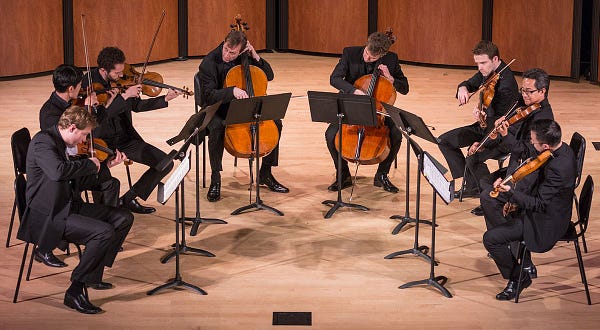
Can you elaborate on this idea, which I think is brilliant by the way!
The plotter symphony is an ongoing happening that is taking place in my plotter lab.
Each drawing has a sonic footprint and character that I would love to share with others. I am working on a quartet, four machines that create sound and visuals simultaneously.
I am in love with that idea and can't wait to make it happen in 2023.
Are there any new technologies or tools that you have used recently that you've really enjoyed?
I am bored with tools like midjourney and all these limited-access, paywalled ai services from 'open'-ai.
Like I mentioned earlier, I like what toxi is doing with @thi.ng, but that's not a technology per se, but a general framework and toolset.
Do you have an idea of what the next project is that you want to release as a collection of NFTs?
I am mostly minting spontaneously and out of impulse. I will change this and possibly include some curation in the future. I’m thinking maybe too, releasing something I find proper, maybe something on Ethereum for once.
That’s very exciting to hear! I agree, sometimes work needs proper curation and a story. Looking forward to seeing your creative story/career continue to unfold…
I see Marcels work as future proof. His ideas are constantly evolving based on his environment and experiences. We must protect forward thinking creatives like him, at all costs!
I want to close with saying that Schwittlick and many other artists bring so much excitement to this space. On 10/19/2022, my friend @thefunnyguysnft tweeted something that I think is quite powerful and fully agree with:
It's actually not collectors supporting artists it's artists supporting collectors - our lives would be so much more bleak without them.

